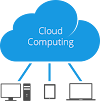Syllabus for MCA Entrance Exam
MCA Entrance Exam Syllabus: Most of the MCA entrance test questions are objective type questions and some even include fill in the blanks, true or false, etc… Normally, MCA entrance exams comprise questions from statistics, basics of computers, and mathematics. Some universities even test the reasoning ability, general knowledge, quantitative and verbal ability of the students.Most of the Indian universities conduct their own entrance test to select the students on the basis of the marks secured by them in the common entrance test (AIMCET) conducted by the "IIT, Roorkee"
 |
| Syllabus for MCA Entrance Exam |
Books for preparing for MCA entrance exam:
Many private institutes conduct coaching classes for helping the students to get through the entrance examination. Apart from this, many books are being written by experts for helping the students. These books contain the previous year question papers with answer keys of different universities and some of these books also contain practice test papers, with the help of which the students can prepare and evaluate themselves before attending the entrance test. Some of the most popular MCA entranceexamination books include the MCA entrance examination book written by J.V. Subramanyam, "TANCET MCA-Anna University" written by V.V.K. Subburaj, "IGNOU opened Entrance Exam for M.B.A and M.C.A" written by V.V.K. Subburaj, etc.
General syllabus of MCA Entrance
A) MATHEMATICS:
Algebra:Fundamental operations in Algebra, Expansion, factorization, simultaneous linear/quadratic equations, indices, logarithms, arithmetic, geometric and harmonic progressions, binomial theorem, permutations and combinations, surds, determinants, matrices and application to the solution of simultaneous linear equations.
Co-ordinate Geometry:
Rectangular Cartesian co-ordinates, equations of a line, midpoint, intersections etc., equations of a circle, distance formulae, pair of straight lines, parabola, ellipse and hyperbola, simple geometric transformations such as translation, rotation, scaling.
Calculus:
Limit of functions, continuous functions, differentiation of functions(s), Tangents and normal, simple examples of maxima and minima, Integration of function by parts, by substitution and by partial fraction, definite integral application to volumes and surfaces of frustums of a sphere, cone, cylinder, Taylor Series.
Differential Equations:
Differential equations of first order and their solutions, linear differential equations with constant coefficients, homogenous linear differential equations.
Vector:
Position vector, additions and subtraction of vectors, scalar and vector products and their applications to simple geometrical problems and mechanics.
Trigonometry:
Simple identities, trigonometric equations, properties of triangles, the solution of triangles, height and distance, inverse function.
Probability and Stats:
Basic concepts of probability theory, Averages, Dependent and independent events, frequency distributions, and measures of dispersions, skewness and kurtosis, random variable and distribution functions, mathematical expectations, Binomial, Poisson, normal distributions, curve fitting, and a principle of least squares, correlation, and regression.
Linear Programming:
Formulation of simple linear programming problems, basic concepts of graphical and simplex methods.
Read Also Top 10 Private Engineering Colleges In India
B) COMPUTER AWARENESS:
Computer Basics:
Organization of a computer, Central Processing Unit (CPU), Structure of instructions in CPU, input/output devices, computer memory, memory organization, backup devices.
Data Representation:
Representation of characters, integers, and fractions, binary and hexadecimal representations, Binary Arithmetic: addition, subtraction, division, multiplication, single arithmetic and two complement arithmetic, floating point representation of numbers, normalized floating point representation, Boolean algebra, truth tables, Venn diagrams.
Computer Architecture:
Block structure of computers, communication between the processor and I / O devices, interrupts.
Computer Language:
Assembly language and high-level language, Multiprogramming and time-sharing operating systems, Computer Programming in C. Flowchart and Algorithms
ALL THE BEST
MCA ENTRANCE EXAM BOOKS------------===
1-mca entrance exam guide by rph editorial board
2-the person guide to mca entrance examination by Edgar Thorpe
3-mca entrances by Amit m Agarwal




0 Comments